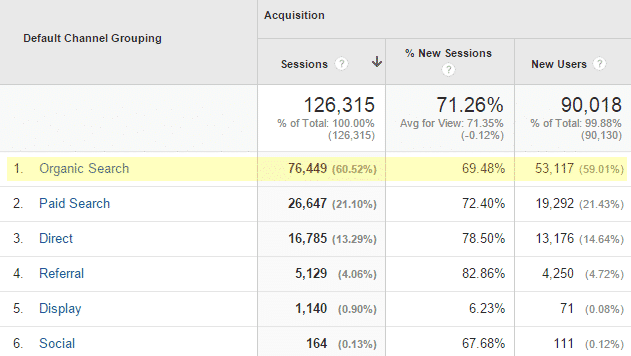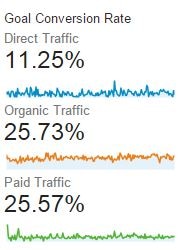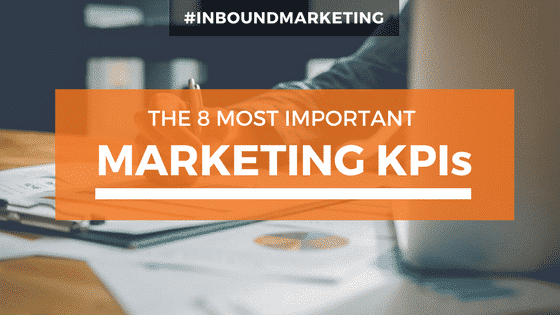Businesses carefully tracking their marketing analytics have a huge competitor advantage. Each company is different, and the key performance indicators (KPIs) for marketing need to be set and adjusted accordingly.After all, some companies sell products, while others sell services. Sales can be focused on one big transaction (like a car) or a subscription (such as Netflix).
A marketing team has to do more than write catchy copy or design pretty banners.
Understanding how to attract visitors, convert leads, and close sales is essential for establishing KPIs and monitoring the effectiveness of marketing campaigns.
Not sure where to start? The following list includes some of the most important marketing KPIs to track and ideas about how they can be tailored to your company’s needs.
1. Unique Visitors and Visits
Is your content (website, blog, social media, newsletter etc.) attracting people to your website? Of those visitors, how many are returning each week or month? Knowing these numbers is essential for understanding the effectiveness of the current inbound marketing efforts.
For companies focused on driving leads with search engine optimisation (SEO), it’s just as important to know if these efforts are yielding results, which brings us to the next marketing KPI;
2. SEO (Organic) – Earned Traffic
For many businesses, they need to focus on the TOF at activities, which for many will involve SEO.

It is important to track the number of users how come from SEO activities and in Google Analytics this will be found as Organic, see below a client example:

Note: As you can see from the above example, majority of the traffic is generated from Organic Search, which primarily generated from SEO efforts.
The next step is to find out which pages are generating traffic. There may be surprise learnings: perhaps a page you did not target is unexpectedly bringing in traffic and possibly leads that convert. On the other hand, a page everyone was sure was a winner might turn out to be a dud.
It is important to know how much of your organic traffic is generated from branded searches. Unfortunately, Google Analytics does not provide all keyword data, but there are ways your marketing agency can estimate the ratio. Knowing the numbers around branded keywords can help show if the knowledge of the brand name is increasing.
Want to learn more about SEO? Check out our SEO Strategy Guide for 2017/18
3. Social Media Reach (Followers, Likes, Shares)
While it is not important for all businesses, it is defiantly a KPI to consider if your target audience uses social media. Some marketers consider the number of followers from Facebook, Twitter, Pinterest and Instagram a vanity metric. What’s important to understand is the traffic and conversions coming from those followers, likes, shares etc.
Content that’s being liked and shared is, at the very least, increasing brand awareness. But if it isn’t sending website traffic and driving sales, you should rethink the content posted and the audience targeted.
Here is a brand awareness social media post, which yielded 109+ Likes & 12 Shares:

Are the call-to-action prompts effective? Does the content communicate with prospective consumers? Also, does it keep current customers engaged?
Here is a post, which had a clear call-to-action towards a ‘free marketing audit’.

For companies using a subscription model, social media can help to underscore the value of the product and provide customer service.
4. Conversion Rates
When you know which content is attracting visitors to your site, you need figure out what traffic is converting. If SEO leads are converting much lower rate than those who came through AdWords, then you either:
1. Adjust your marketing budget and the team’s efforts.
2. Review the marketing funnel and review the call-to-actions

To the left, you will see one of clients yields the highest conversion rate through Google Organic.
Social media posts can be fun to write, but if they are not converting into sales, it can be a lot of effort for little return. As part of your marketing KPIs, be sure to use url tracking to help identify which campaigns, sources, and mediums are the most effective at converting customers.
Some businesses may want to break out the marketing qualified leads (MQL): users who have downloaded a white paper or newsletter and the sales qualified leads (SQL): visitors who have seriously engaged with the sales team.
Knowing the sources of these leads can also help. It is also important to analyse the landing page conversion rates to know the effectiveness of the page design, message and call-to-action.
5. Cost Per Lead
When all of the conversion statistics have been tallied, find out how much each costs. Important line items to include for inbound marketing are labour, overhead, and technology necessary.
For outbound marketing, key costs are advertising, marketing, overhead and labour. Once you know those numbers, you’ll find it easier to analyse the effectiveness of your marketing efforts.
6. Lead to Customer Ratio
Once the leads are in the system, you need to know how many your sales team has closed. Calculate your sales qualified lead acceptance rate and your sales accepted lead conversion rate.
Sales qualified leads are sales ready given activities or triggers they completed. Sales accepted leads are ones your sales team considers opportunities, and they have spoken with or plan to. These sales KPIs will help clarify the effectiveness of your marketing campaigns.
7. Cost Per Customer Acquisition
Closely linked with the cost per lead is the cost per customer acquisition. This is calculated by the cost of the marketing investment divided by the number of new customers acquired.
8. Return on Investment
Knowing the statistics around the cost per lead and cost per customer acquisition will inform the return on investment (ROI) for both inbound and outbound marketing. This number can be calculated by tracking the marketing efforts to the sales they generated.
Although all these marketing KPIs are important, do not try to track all of them at once. Focus on three to five at a time.
Trying to fix too many things at once can be frustrating or confusing. After you have tracked the metrics, you will most likely want to rethink or optimize some of your company’s marketing strategies.
For more information on inbound marketing or for a free inbound audit of your business, contact Inbound Marketing Agency today.




